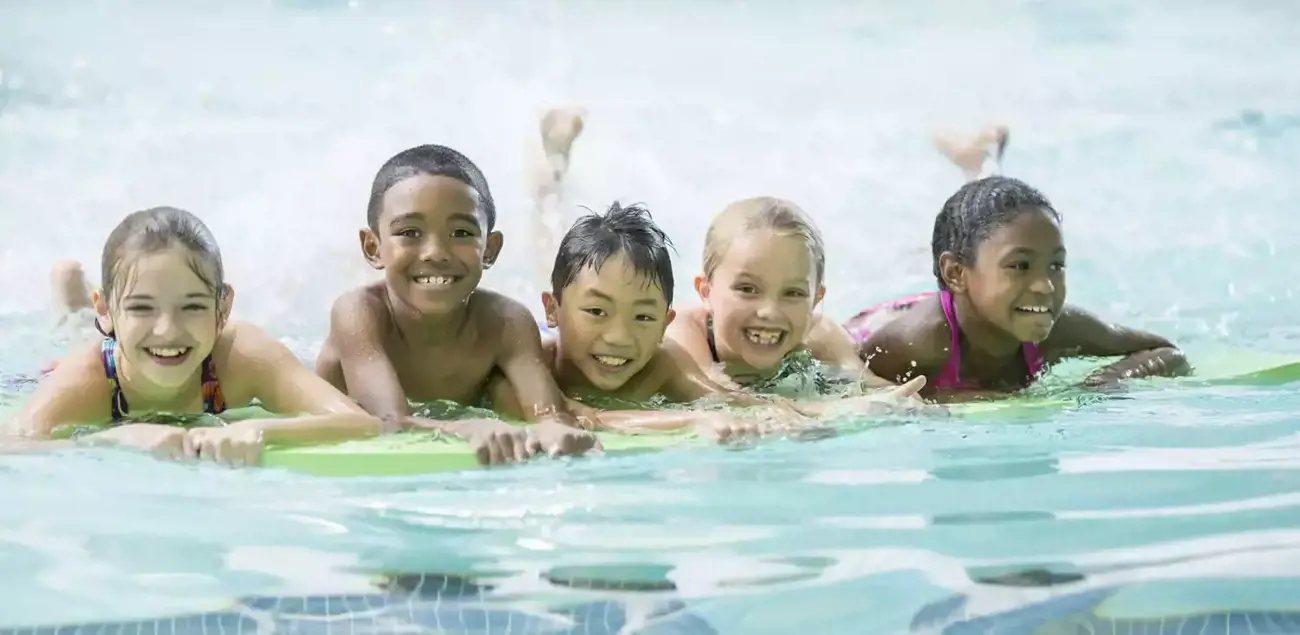Water play is wonderful for little ones, and as your child grows from baby to big kid, it’s essential that they learn the swimming and water safety skills that will help them have fun, keep fit and stay safe in aquatic situations.
Many parents enrol their under-fives in swimming classes – which is great to see – but Royal Life Saving data shows that 75 per cent of children stop swimming lessons before the age of nine, and 40 per cent of 12-year-olds are not achieving national benchmarks for swimming and water safety.
With summer just around the corner, the Royal Life Saving Society has published a new National Swimming and Water Safety Framework which provides a consistent approach for swim schools, and lists the skills our children should have at the age of six, 12 and 17.
This Framework was re-developed with organisations like AUSTSWIM and Swimming Australia, and it has been endorsed by the Australian Swim Schools Association and others, so let’s explore its content in some depth.
What kind of swimming and water safety education should children get?
The Framework endorses a consistent, broad and balanced swimming and water safety education. This means that although it’s important for a child to learn skills and abilities (like how to float without floaties), it’s also important that they learn how to think, understand and behave in ways that keep them safer in, on and around the water.
For this reason, the Framework sets out eight strands that students should learn about as part of a well-rounded swimming and water safety education.
The key learning areas are:
- Hazards and personal safety, e.g. learning how to behave safely
- Entries and exits, e.g. learning how to get in and out of different environments and conditions
- Flotation, e.g. learning how to float, scull and tread water
- Swimming, e.g. learning different swimming and survival strokes
- Underwater, e.g. developing confidence and breath control, and learning how to swim deeper
- Lifesaving, e.g. learning who to ask for help and what to do in an emergency
- Rescue, e.g. learning how to be rescued and help rescue someone else and
- Survival sequence, e.g. simulating a water emergency scenario and knowing which survival strategy to use.
A young child will have different physical and cognitive capabilities to an older child or teen, so within these eight strands, there are different things for students to master at key stages.
To clearly set out the essential skills that various ages should be achieving, the Framework provides three national benchmarks for swimming and water safety.
According to the benchmarks, what should school-aged children be able to do in, on and around the water?
At the age of six, the Framework says that every Australian child should be able to:
- Enter and exit shallow water without assistance
- Swim continuously for at least five metres
- Float and recover to a standing or secure position
- Submerge their body and move through an obstacle
- Identify people and actions to help in an aquatic emergency
- Identify rules for safe behaviour at aquatic environments at or near the home
- Perform a survival sequence to simulate an accidental entry
At the age of 12, every Australian should be able to:
- Enter and exit the water in a range of environments
- Swim continuously for 50 metres
- Float, scull or tread water for two minutes and signal for help
- Surface, dive, swim underwater and search to recover an object from deep water
- Understand and respect safety rules for a range of water environments
- Respond to an emergency and perform a primary assessment
- Rescue a person using a non-swimming rescue technique with non-rigid aids
- Perform a survival sequence wearing clothing
At the age of 17, 50 per cent of all Australians should be able to:
- Help others to exit deep water using bystanders
- Swim continuously for 400 metres
- Float, scull or tread water for five minutes and signal for help
- Understand behaviours that affect personal safety in aquatic environments and activities
- Search in deep water and recover a person
- Respond to an emergency and provide first aid
- Rescue an unconscious person in deep water
- Perform a survival sequence wearing heavy clothing.
All in all, Royal Life Saving CEO, Justin Scarr says, ‘The Framework reinforces the importance of freestyle and backstroke swimming strokes, as well as water safety skills such as survival strokes, treading water and rescue techniques to keep children safe in water.’
What should you do if your child can’t meet their benchmark?
If your child doesn’t have the skills for their age group, then Mr Scarr urges you to speak with your local swim school and organise some lessons.
After all, a thorough swimming and water safety education will help your child to be safe in the pool, confident in the surf, helpful in an emergency and knowledgeable about many aquatic situations – not just this summer, but all through their life.
Additional reference


































